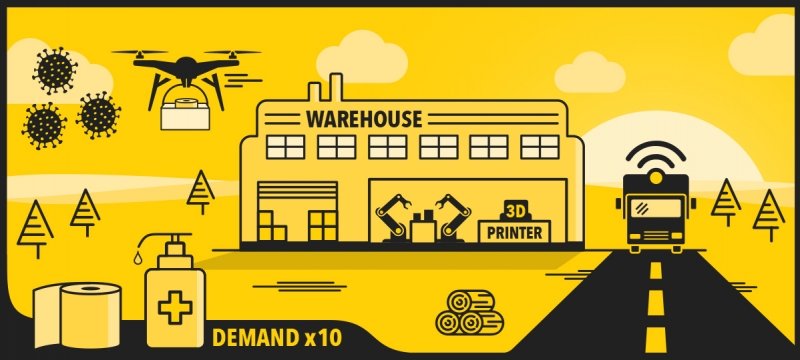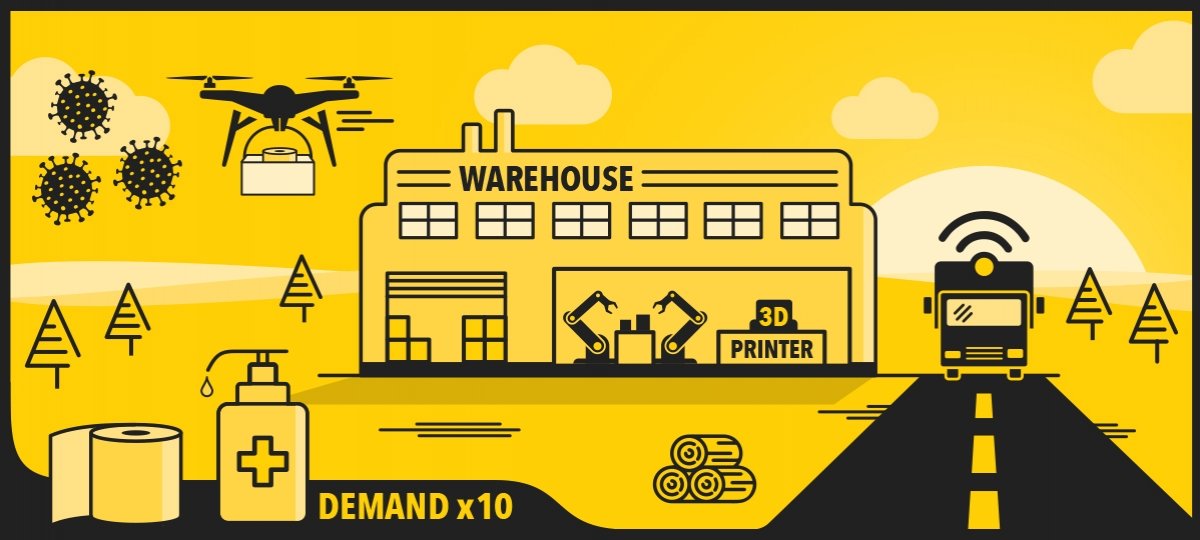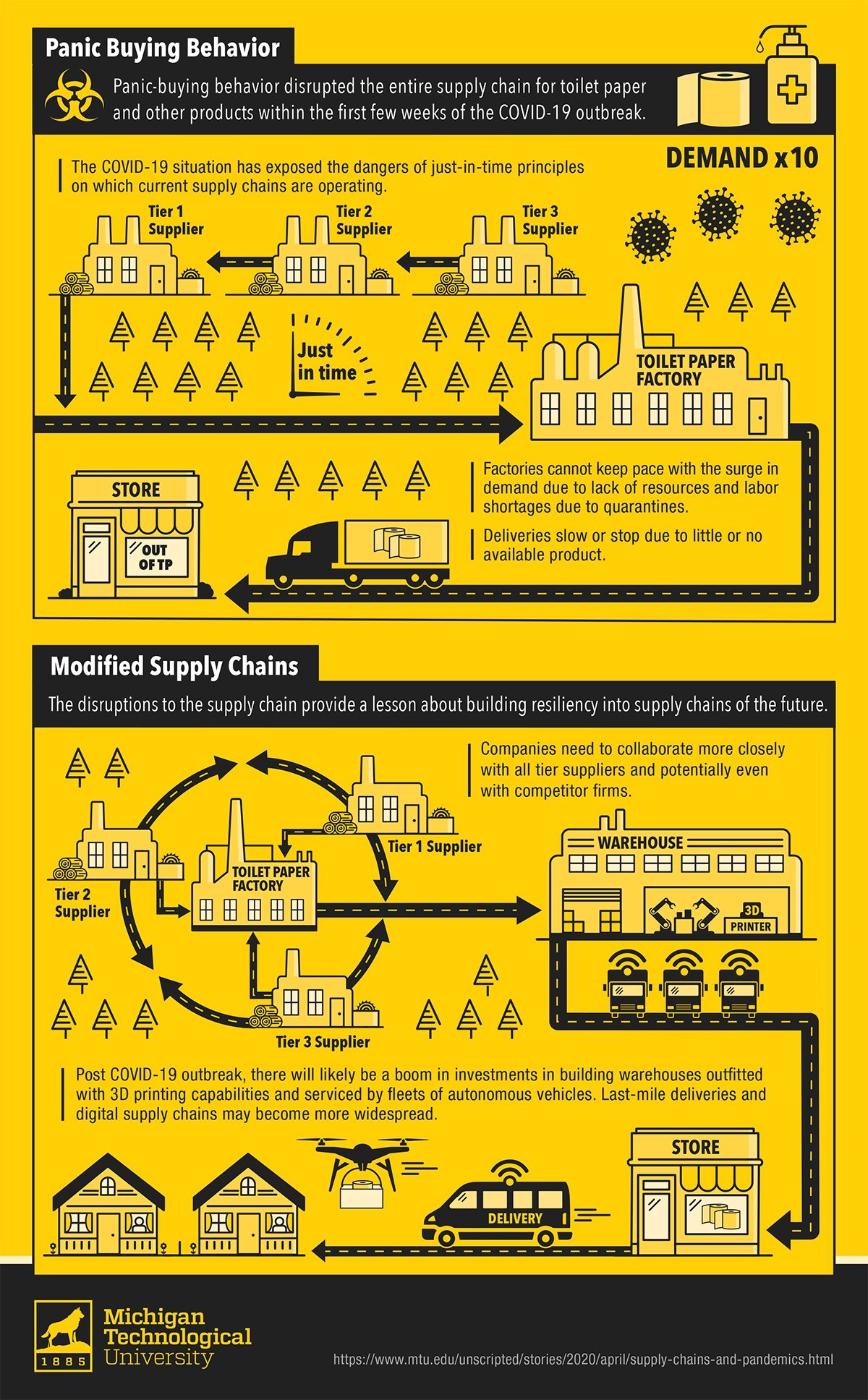The COVID-19 pandemic has revealed the need for supply chains to evolve to meet demand flux and minimize risk.
It seems that the COVID-19 pandemic has made the world stand still. Often, this outbreak has been compared to a world war situation. While there are many similarities between the two, there exist certain differences: namely, staying in versus being called out to help, and a lockdown on businesses rather than ramping up production.
However, there are lessons that can be learned about how wars changed the business landscape. The postwar period started with a years-long recession. Workers moved from less-productive to more-productive jobs. To cope with the resource scarcity, firms adopted "just-in-time" systems, which eliminated the need to store large inventories, as firms could produce and transport only the necessary items in necessary quantities at the necessary time. Gradually, supply chains evolved into a complex system — a global network of firms — involved from the moving of raw materials to the delivery of final products to consumers.
The COVID-19 situation has exposed serious weaknesses in existing supply chains. For example, consumers’ panic-buying behavior disrupted the entire supply chain for toilet paper and sanitizers within the first few weeks of the outbreak in the U.S. The demand for toilet paper and sanitizers suddenly reached 10 times the normal demand. As a result, retailers were unable to replenish such items quickly because of the supply issues. Manufacturers can’t build new factories overnight — they must look outside to suppliers and partners to ramp up the production scale.
About the Researcher
The current supply chains were not built to handle situations like COVID-19. Although such situations are rare, the world cannot afford months-long lead times for critical resources, such as ventilators, should another crisis arise. COVID-19 has shown that building resiliency into supply chains is vital.
It’s no secret that the COVID-19 outbreak has already disrupted global supply chains significantly, so the questions now are: How will supply chains evolve post-pandemic? Will the supply chains be less globalized? More importantly, how could future supply chains operate amid such disruptions?
These aren’t easy questions. But we can start by saying that the future belongs to those companies which will have resilient supply chains.
As a starting point toward building robust supply chains, managers must identify potential sources of risks and quantify such risks accordingly. Once managers are able to quantify risks, they can replace or remove fragile or vulnerable parts of their supply network. Now more than ever, firms need to collaborate with not only tier-one suppliers, but also with tier-two and tier-three suppliers. This will allow firms to perform synchronized actions that will help in mobilizing resources efficiently across the supply chain.
The outbreak has also changed the way firms compete and cooperate with each other. For example, Google and Apple teamed up to build an app for tracing susceptible patients. Pharmaceutical companies like Sanofi and GSK are partnering to develop vaccines for the coronavirus. There’s a tremendous advantage for firms that learn from the very act of rivalry. Post COVID-19 outbreak, we may see a shift toward more “coopetition” — cooperation and competition at the same time.
Intuitively, some managers may now fear that their global supply network system breeds risk, and they may be tempted to cut down their global supply operations as a way to reduce the system risk.
However, managers must understand that it’s the size and global scale that allow organizations to draw and redeploy resources across geographical areas in order to sail through crises.
Therefore, it’s not a great idea to start scaling back global supply operations just because of inherited risk factors that come with any logistical system.
Managers may need to adjust their single-sourcing strategies (purchasing an item from a single supplier) versus multisourcing strategies (purchasing a similar item from multiple suppliers) to mitigate potential risks related to supply issues.
Clearly, the COVID-19 situation has triggered the ever-growing interest in “last-mile delivery”. Many supermarkets have already adopted last-mile deliveries, and are delivering groceries at doorsteps because of COVID-19. We can anticipate that post-outbreak, there will be a boom in investments in building future warehouses, such as those with 3D printers that can build complex electronic and electrical parts. It is likely that firms will increasingly complement their existing logistical infrastructure with crowdshipping services.
Finally, we can predict that future supply chains will be more autonomous and will be able to defy logistical mobility restrictions caused by disruptions. Therefore, we shouldn’t be surprised at the pace at which parts of supply chain processes will be taken over by autonomous vehicles, robots and algorithms.
Michigan Technological University is an R1 public research university founded in 1885 in Houghton, and is home to nearly 7,500 students from more than 60 countries around the world. Consistently ranked among the best universities in the country for return on investment, Michigan's flagship technological university offers more than 185 undergraduate and graduate degree programs in science and technology, engineering, computing, forestry, business, health professions, humanities, mathematics, social sciences, and the arts. The rural campus is situated just miles from Lake Superior in Michigan's Upper Peninsula, offering year-round opportunities for outdoor adventure.







Comments